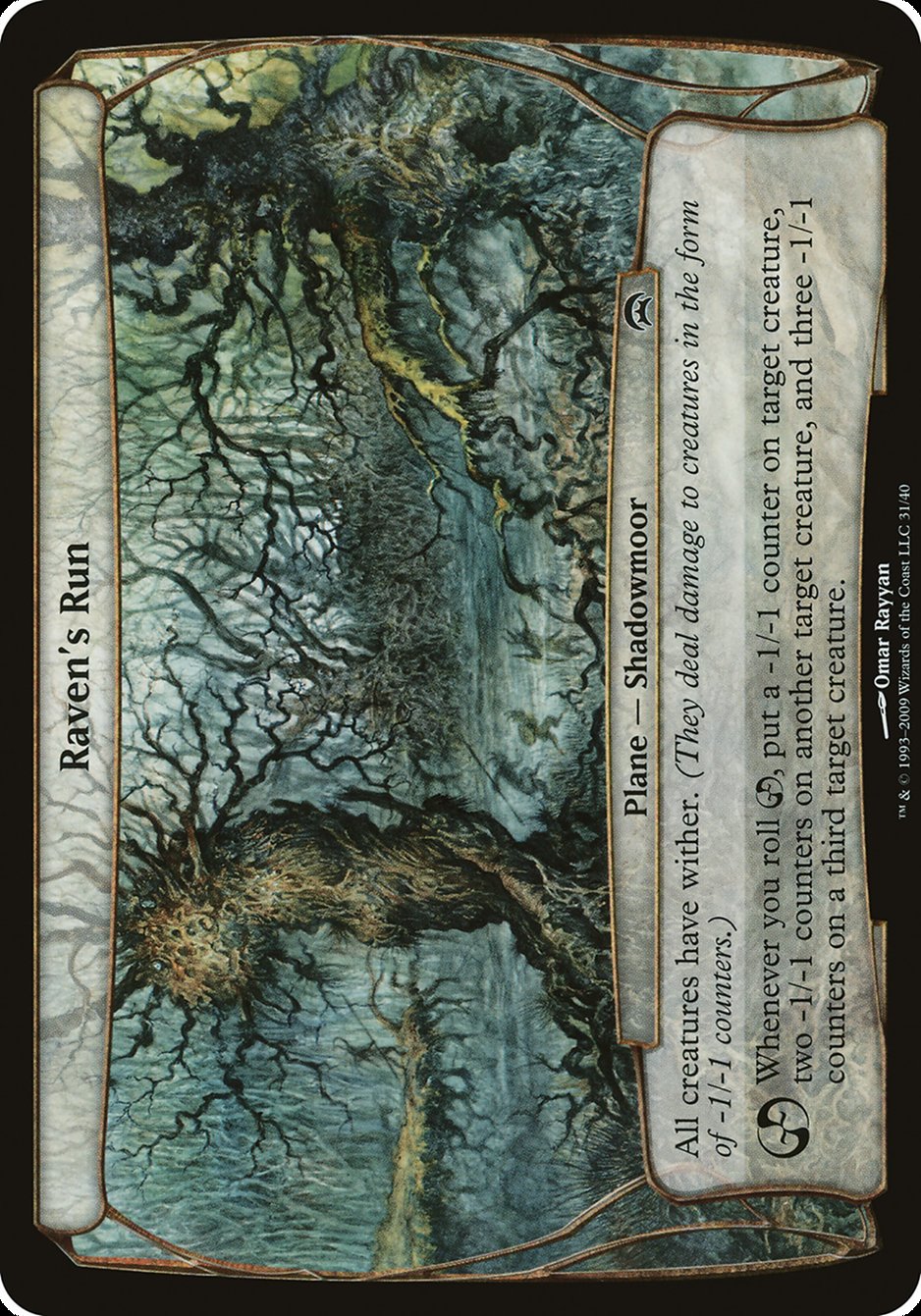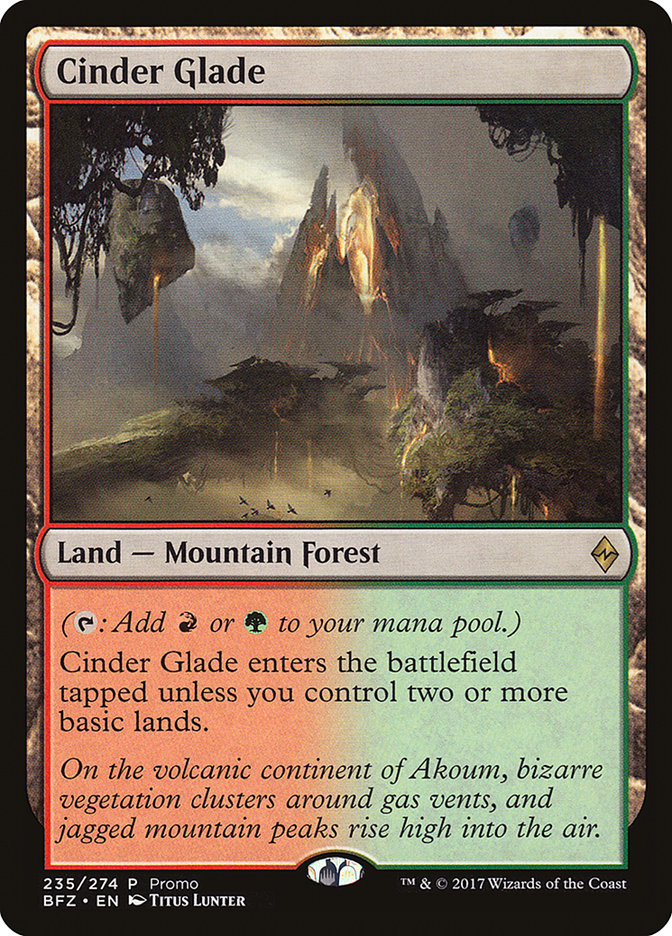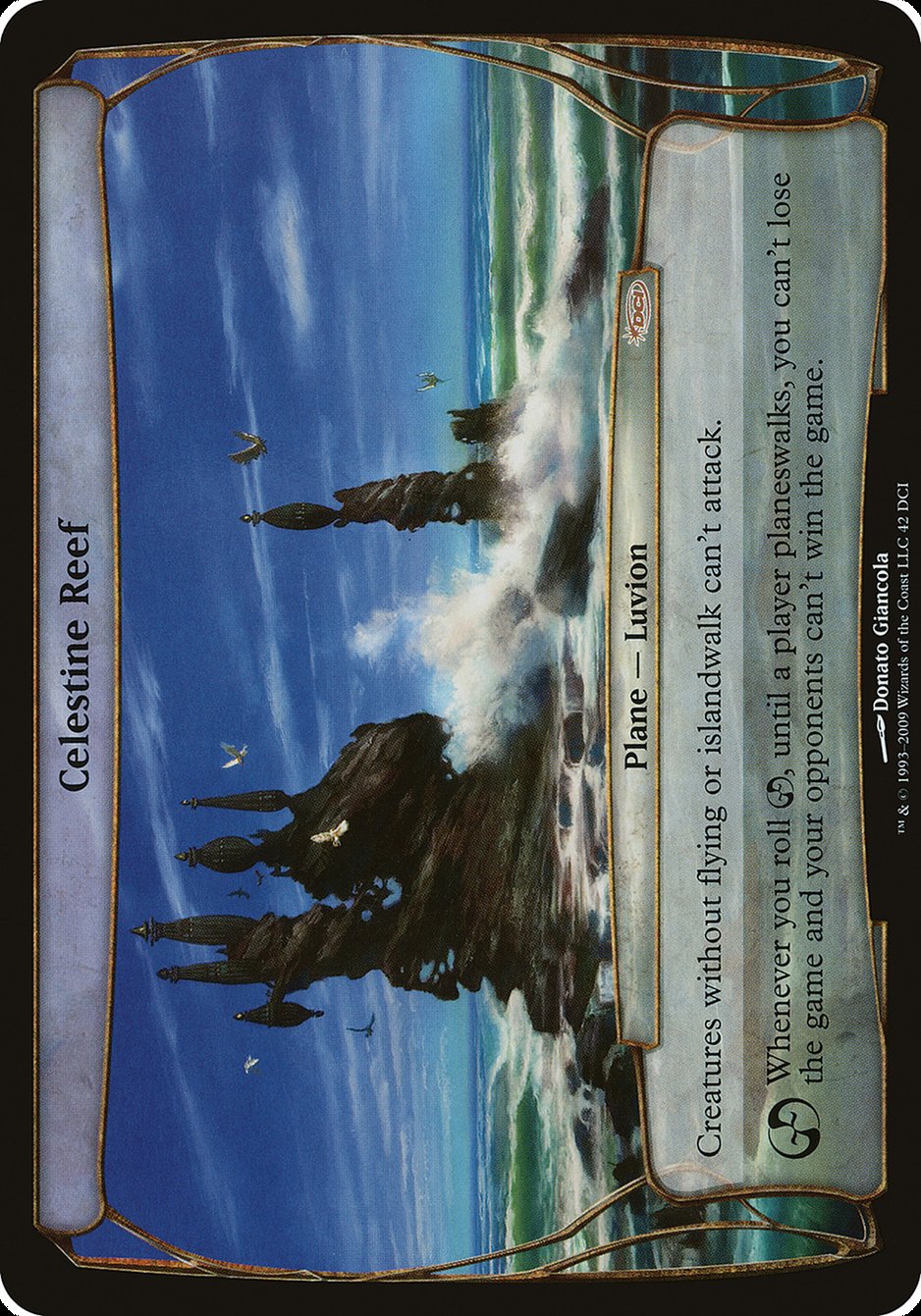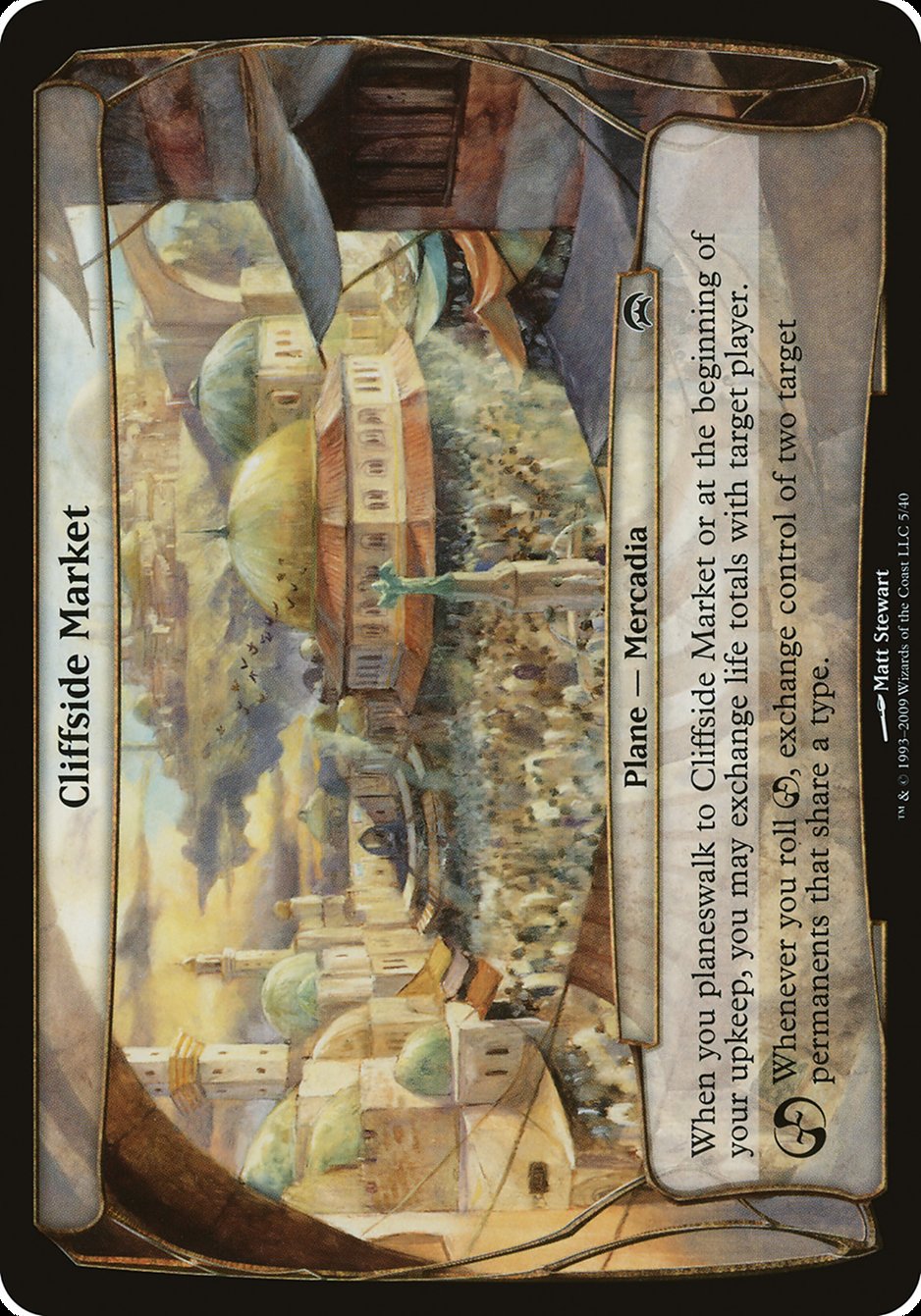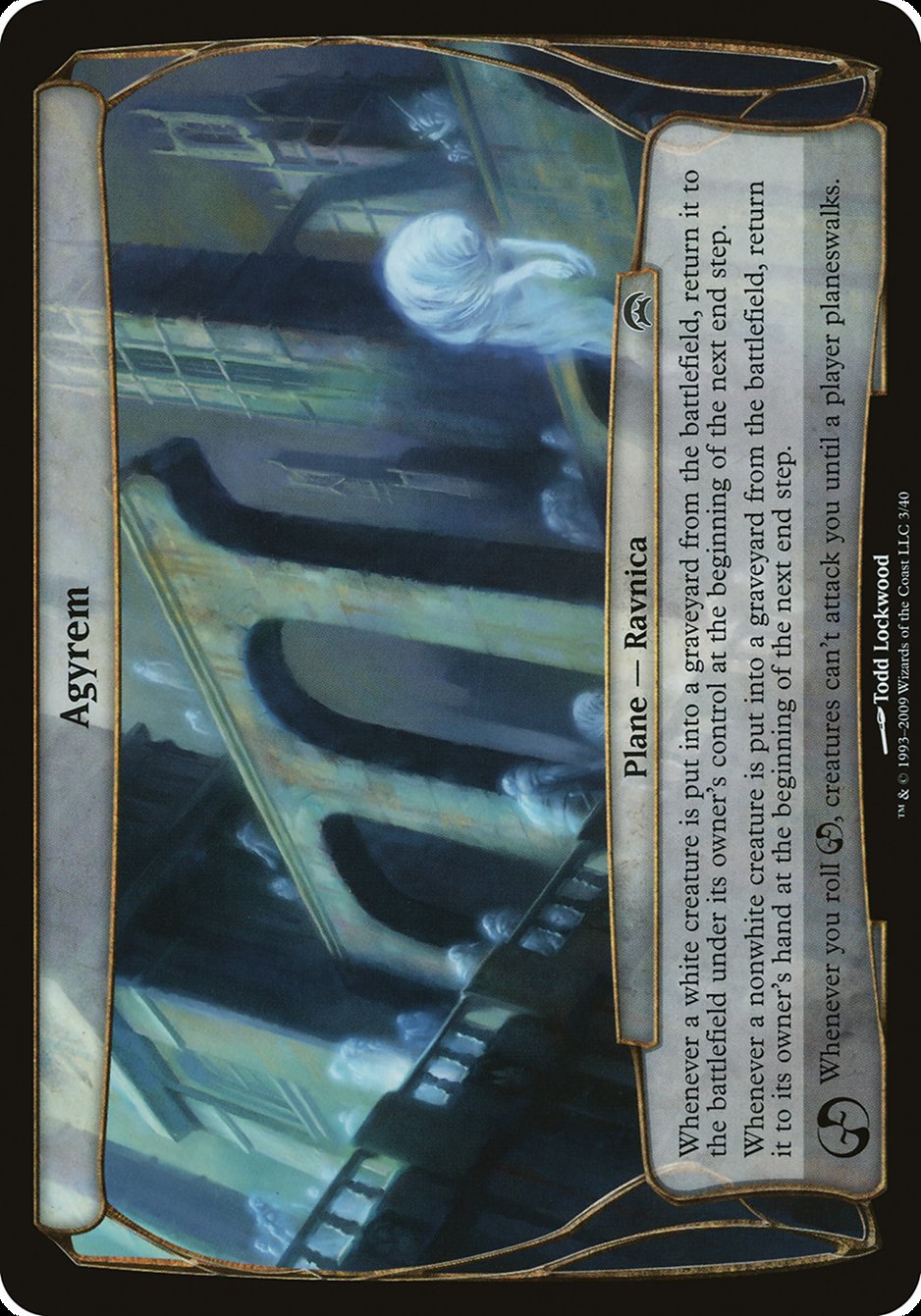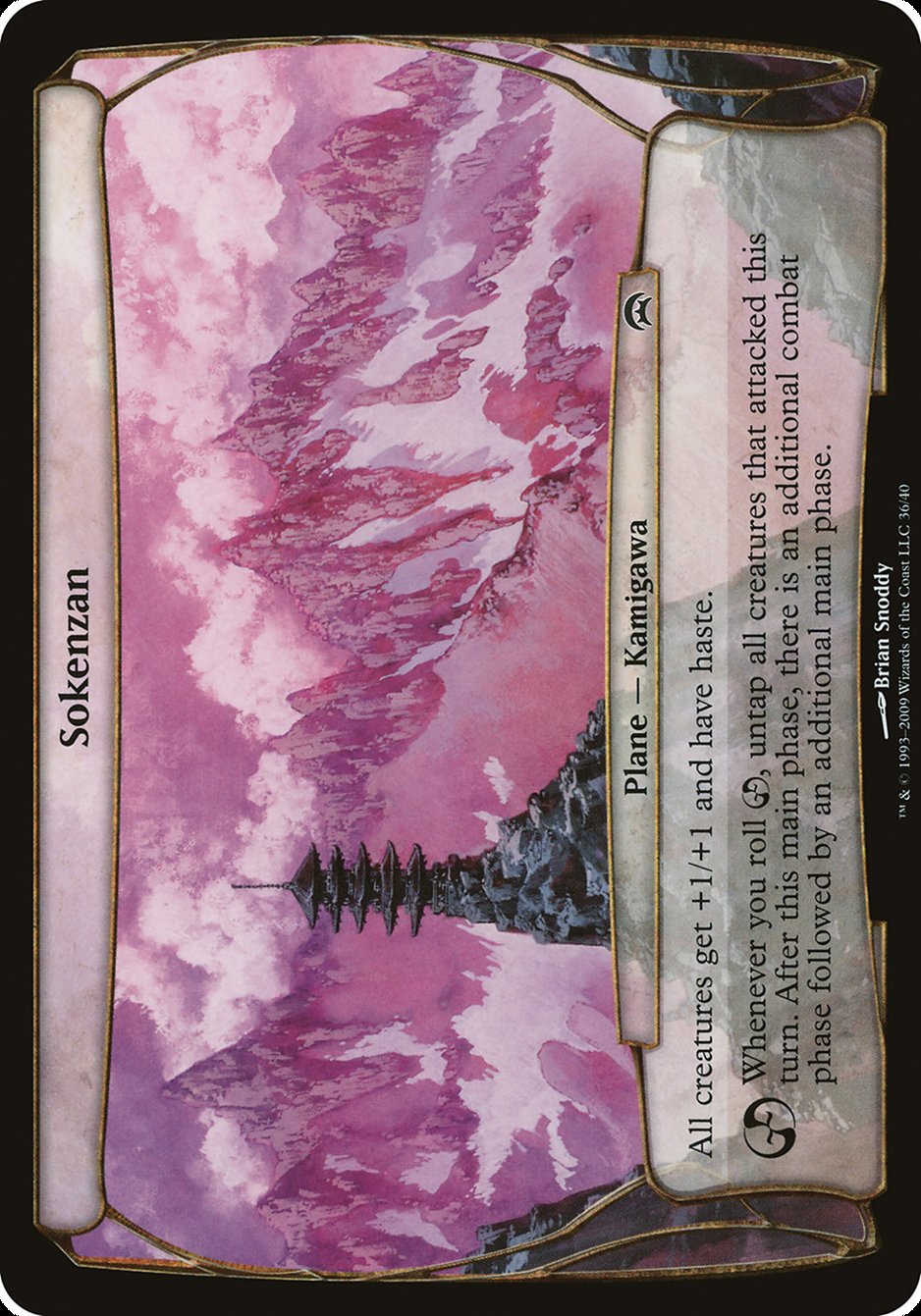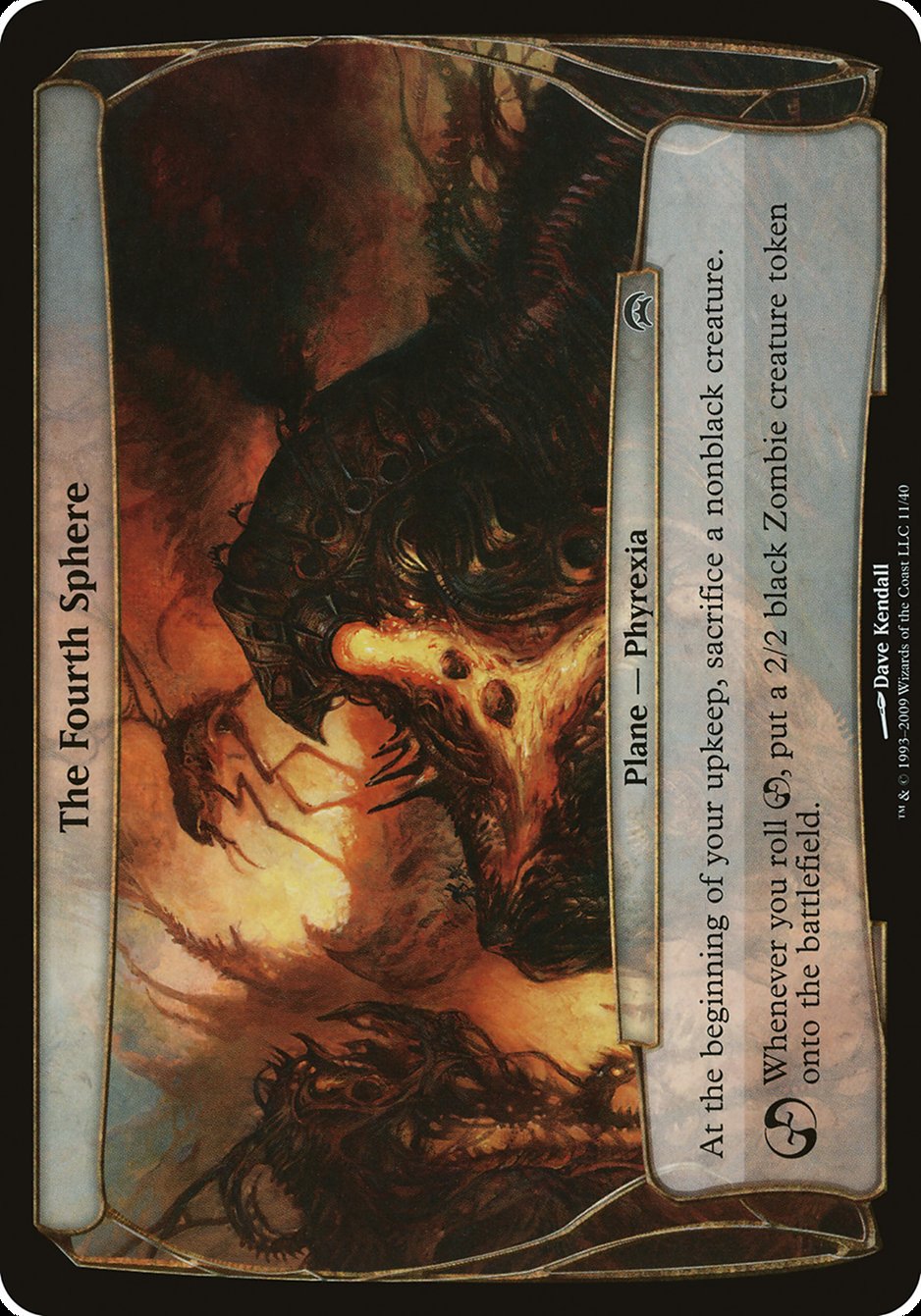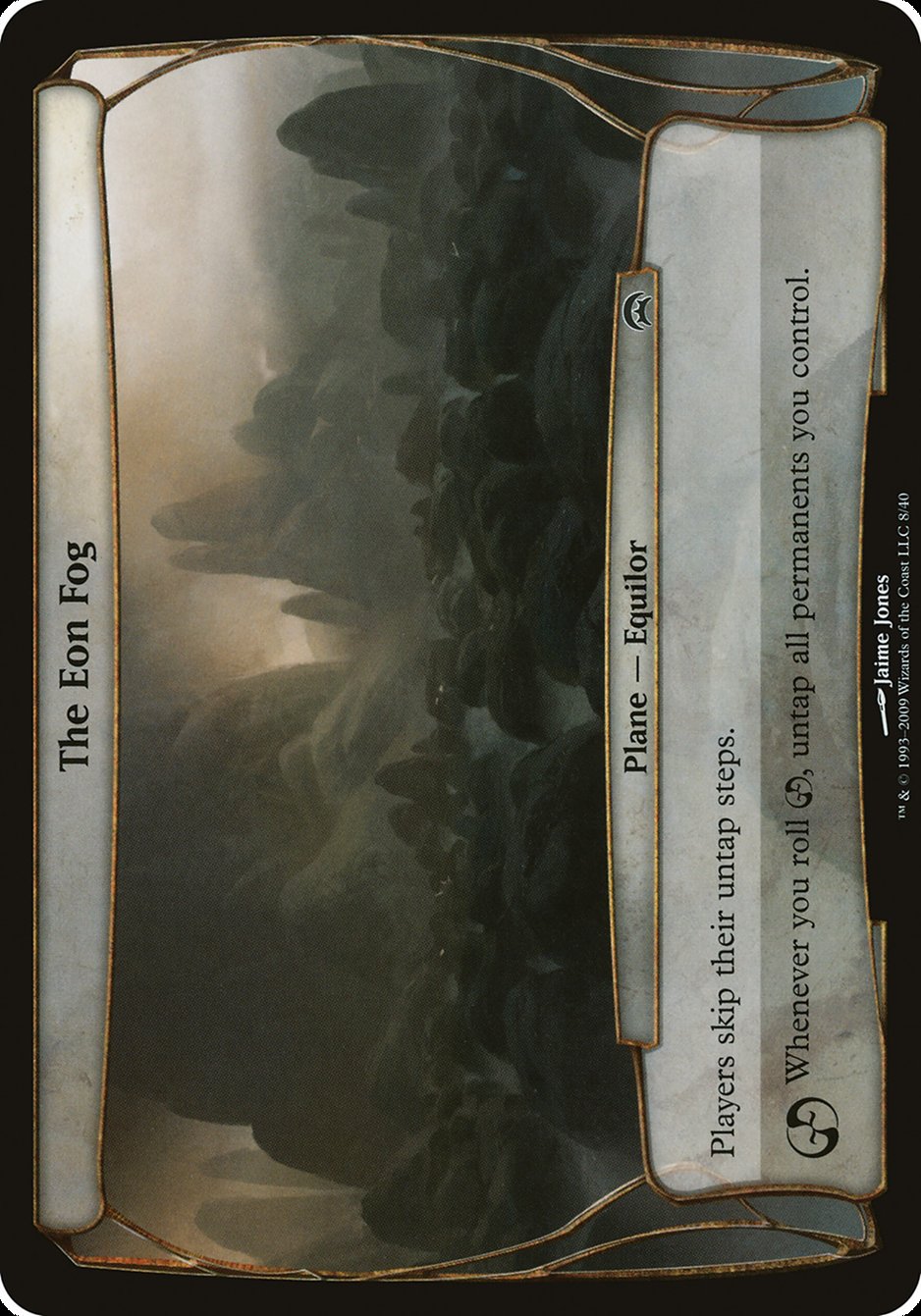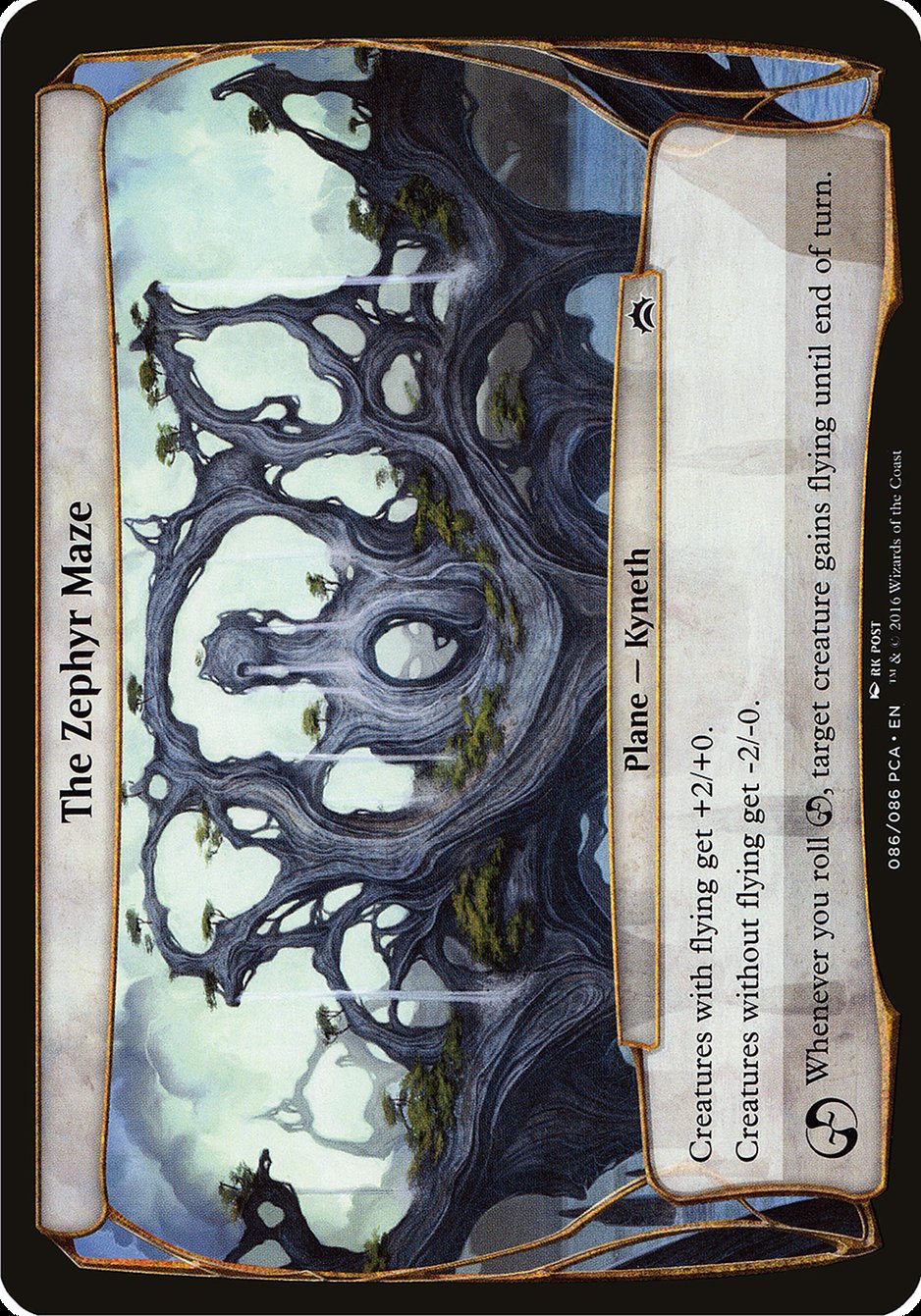Coto de Cuervos Carta MTG
| Colecciones da carta | Lanzado en 2 coleccionesVer todos |
| Rareza | Común |
| Tipo | Plano — Páramo Sombrío |
Texto de la carta
Todas las criaturas tienen la habilidad de debilitar. (Hacen daño a las criaturas en forma de contadores -1/-1.) Siempre que lances caos, pon un contador -1/-1 sobre la criatura objetivo, dos contadores -1/-1 sobre otra criatura objetivo y tres contadores -1/-1 sobre una tercera criatura objetivo.
Cartas Similares
Raven's Run promete ser una presencia dinámica en mazos donde la estrategia de tierras es clave. Al igual que otras tierras dobles en MTG, Raven's Run entra en el campo de batalla girada pero ofrece una ventaja táctica al proporcionar dos tipos de maná. Se une a una distinguida alineación de tierras como el Templo de la Epifanía que también entra girado, ofrece escudriñamiento 1 para filtrar robos, pero no tiene la capacidad de mejorar criaturas que posee Raven's Run.
Comparándola con otras cartas de su categoría, el Precipicio Enraizado es un contendiente sin desventajas de entrada girada si controlas una Montaña o un Bosque, ofreciendo así versatilidad inmediata. Otra carta similar es la Llanura Cenicienta, que se beneficia tanto de los tipos de tierra básicos Montaña y Bosque, como de la capacidad de entrar en juego sin girar si controlas dos o más tierras básicas. Sin embargo, ninguna otorga el aumento de poder y resistencia para Elementales que es único en Raven's Run.
En última instancia, Raven's Run podría ser considerado como un marginal con su distintiva capacidad para fortalecer la fuerza de las criaturas Elementales, potencialmente cambiando el rumbo del juego al tiempo que proporciona maná esencial en un apuro.
Cartas similares a Coto de Cuervos por color, tipo y coste de maná
Aspectos positivos de la carta
Ventaja en cartas: Raven’s Run es una excelente herramienta para sobresalir en la economía de cartas. Permite un dibujo estratégico que puede reforzar significativamente tu mano, manteniendo tus opciones versátiles y amenazantes para los oponentes.
Aceleración de recursos: Esta carta aumenta eficientemente tu reserva de recursos. Con la capacidad de añadir mana adicional, te impulsa hacia adelante, permitiendo jugadas más grandes y reforzando tu presencia en el tablero mucho más rápido que tu adversario.
Velocidad instantánea: La versatilidad de un hechizo a velocidad instantánea no puede ser subestimada. Raven’s Run interrumpe el flujo del juego en momentos críticos, potencialmente salvándote de situaciones difíciles o maximizando el impacto de tu estrategia al final del turno de un oponente.
Aspectos negativos de la carta
Requisito de descarte: Raven’s Run requiere descartar una carta al activarse. Esto podría agotar tu mano en momentos críticos, dejándote sin suficientes opciones para jugadas estratégicas más adelante en el juego.
Coste de mana específico: Raven’s Run exige una combinación precisa de tipos de mana para ser lanzado. Este requisito puede ser restrictivo, haciéndolo menos versátil y más difícil de encajar en barajas multicolores o incoloras que quizás no produzcan el mana necesario de manera consistente.
Coste de mana comparativamente alto: El coste de jugar a Raven’s Run no se considera bajo. Al compararlo con otras cartas con efectos similares o más impactantes, es evidente que no siempre es la opción más económica en términos de eficiencia de mana. Esto puede ralentizar tu juego y reducir la velocidad de rendimiento general de tu baraja.
Razones para incluir Raven’s Run en tu colección
Versatilidad: Raven’s Run es una carta altamente adaptable que encaja perfectamente en una variedad de barajas. Es particularmente potente en formatos donde la utilidad de tierra juega un papel crítico en la formulación de estrategias, permitiendo un juego diverso y flexible.
Potencial de combo: Con su capacidad para interactuar con mecánicas de cementerio, Raven’s Run sirve como componente clave en barajas que capitalizan en la recursión de cartas o sinergias de cementerio. Esto abre caminos para combinaciones poderosas que pueden cambiar el curso del juego.
Relevancia en el meta: Para jugadores involucrados en partidas competitivas, estar atento al meta predominante es crucial. Las características de Raven’s Run abordan las necesidades de varias estrategias prominentes, convirtiéndolo en una adición relevante y oportuna a medida que el panorama de MTG continúa evolucionando.
Cómo vencer
Raven’s Run presenta un desafío único en el campo de batalla de MTG. Esta potente carta requiere un enfoque estratégico para superar sus habilidades. Una táctica clave es abordar la capacidad de generación de mana que Raven’s Run ofrece al jugador oponente. Centrarse en la destrucción de tierras o efectos de control puede evitar que obtengan la ventaja que proporciona el mana adicional. Además, utilizar cartas con habilidades de regreso de tierras puede retrasar temporalmente la curva de mana de tu oponente, dándote una ventaja. Es crucial tener contramedidas listas para lidiar con las criaturas o hechizos que Raven’s Run puede ayudar a tu oponente a jugar. Por lo tanto, jugar cartas que puedan invalidar o neutralizar hechizos y habilidades puede resultar efectivo para suprimir el impulso de poder que Raven’s Run podría proporcionar. Además, es recomendable tener hechizos de eliminación listos para lidiar rápidamente con permanentes problemáticos. Como en todos los desafíos en MTG, la flexibilidad y la adaptación al estado de juego en evolución serán tus mayores aliados al enfrentarte a una carta como Raven’s Run.
Donde comprar
Si estás buscando comprar una carta MTG Coto de Cuervos de un coleccione específico como Planechase Planes and Planechase Anthology Planes, existen varias opciones confiables que debes considerar. Una de las fuentes principales es tu tienda de juegos local, donde a menudo puedes encontrar paquetes de refuerzo, cartas individuales y mazos preconstruidos de colecciones actuales y pasadas. A menudo ofrecen el beneficio adicional de una comunidad donde puedes intercambiar con otros jugadores.
Para un inventario más amplio, particularmente de colecciones más antiguos, mercados en línea como TCGPlayer, Card Kingdom y Card Market ofrecen amplias selecciones y te permiten buscar cartas de colecciones específicos. Las plataformas de comercio electrónico más grandes como eBay y Amazon también tienen listados de varios vendedores, lo que puede ser un buen lugar para buscar productos sellados y hallazgos raros.
Además, el sitio oficial de Magic suele tener un localizador de tiendas y listas de minoristas para encontrar Wizards of the Productos con licencia costera. Recuerde comprobar la autenticidad y el estado de las cartas al comprarlas, especialmente a vendedores individuales en mercados más grandes.
A continuación se muestra una lista de algunos sitios web de tiendas donde puede comprar las Coto de Cuervos y otras cartas MTG:
 COMPRAR
COMPRAR BurnMana es un socio oficial de TCGPlayer
- eBay
- Card Kingdom
- Card Market
- Star City Games
- CoolStuffInc
- MTG Mint Card
- Hareruya
- Troll and Toad
- ABU Games
- Card Hoarder Magic Online
- MTGO Traders Magic Online
Ver productos MTG
Impresiones
La carta Coto de Cuervos Magic the Gathering se lanzó en 2 colecciones diferentes entre 2009-09-04 y 2018-12-25. Ilustrado por Omar Rayyan.
| # | Liberado | Nombre | Código | Símbolo | Número | Marco | Disposición | Borde | Artista |
|---|---|---|---|---|---|---|---|---|---|
| 1 | 2009-09-04 | Planechase Planes | OHOP | 31 | 2003 | Planar | Negra | Omar Rayyan | |
| 2 | 2018-12-25 | Planechase Anthology Planes | OPCA | 66 | 2015 | Planar | Negra | Omar Rayyan |
Reglas e información
La guía de referencia para las reglas de las cartas Coto de Cuervos de Magic: The Gathering proporciona las reglas oficiales, las erratas emitidas, así como un registro de todas las modificaciones funcionales que se han producido.
| Fecha | Texto |
|---|---|
| 01/10/2009 | Una carta de plano boca arriba que se da la vuelta boca abajo se convierte en un nuevo objeto sin relación con su existencia previa. En particular, pierde todos los contadores que pudiera haber tenido. |
| 01/10/2009 | Una carta de plano se trata como si su cuadro de texto incluyera "Cuando lances {PW}, pon esta carta en la parte inferior del mazo de plano de su propietario boca abajo, luego mueve la carta superior de tu mazo de plano fuera de ese mazo de plano y dale la vuelta hacia arriba." Esto se llama la "habilidad de caminar por planos". |
| 01/10/2009 | El daño de las criaturas con marchitar afecta a los jugadores y planeswalkers normalmente. |
| 01/10/2009 | Si una habilidad de un plano se refiere a "tú", se está refiriendo a quien sea el controlador del plano en ese momento, no al jugador que comenzó el juego con esa carta de plano en su mazo. Muchas habilidades de las cartas de plano afectan a todos los jugadores, mientras que muchas otras solo afectan al controlador del plano, así que lee cada habilidad cuidadosamente. |
| 01/10/2009 | Si la fuente del daño todavía está en el campo de batalla en el momento en que se inflige el daño, se verifican sus características para ver si tiene marchitar. Si la fuente ha abandonado el campo de batalla para entonces, se verifica su última existencia en el campo de batalla para ver si tenía marchitar. |
| 01/10/2009 | Múltiples instancias de wither son redundantes. |
| 01/10/2009 | Dado que el daño de una criatura con marchitamiento es un daño real, sigue todas las demás reglas para el daño. Se puede prevenir o redirigir. Cuando se inflige, causará que se activen las habilidades "Siempre que -sta criatura] haga daño" y "Siempre que -sta criatura] reciba daño". |
| 01/10/2009 | Los contadores -1/-1 que resultan de marchitar permanecen en la criatura dañada indefinidamente. No se eliminarán si la criatura se regenera o termina el turno. |
| 01/10/2009 | El controlador de una carta de plano boca arriba es el jugador designado como el "controlador de plano". Normalmente, el controlador de plano es el jugador activo. Sin embargo, si el controlador de plano actual abandonara el juego, en su lugar el siguiente jugador en el orden de turno que no abandonara el juego se convierte en el controlador de plano, luego el antiguo controlador de plano abandona el juego. El nuevo controlador de plano retiene esa designación hasta que abandone el juego o un jugador diferente se convierta en el jugador activo, lo que ocurra primero. |
| 01/10/2009 | La habilidad "Wither" se aplica a cualquier tipo de daño, no solo al daño de combate. |
| 01/10/2009 | Debes elegir tres criaturas distintas cuando se active la habilidad de caos, incluso si esto implica elegir criaturas que controlas. Si no puedes elegir tres criaturas (por ejemplo, porque solo hay dos criaturas en el campo de batalla), la habilidad se quita de la pila y no hace nada. |
